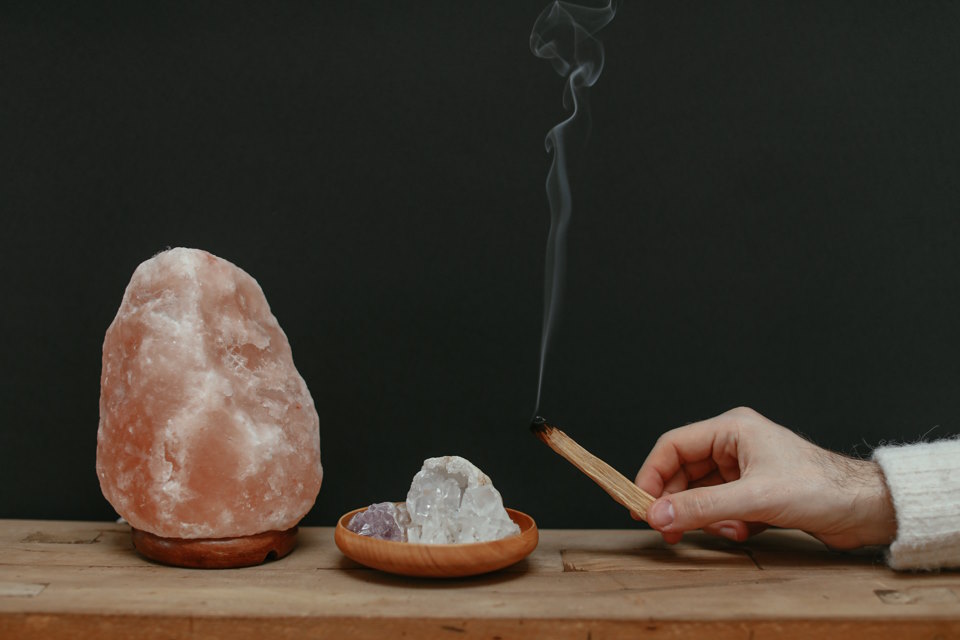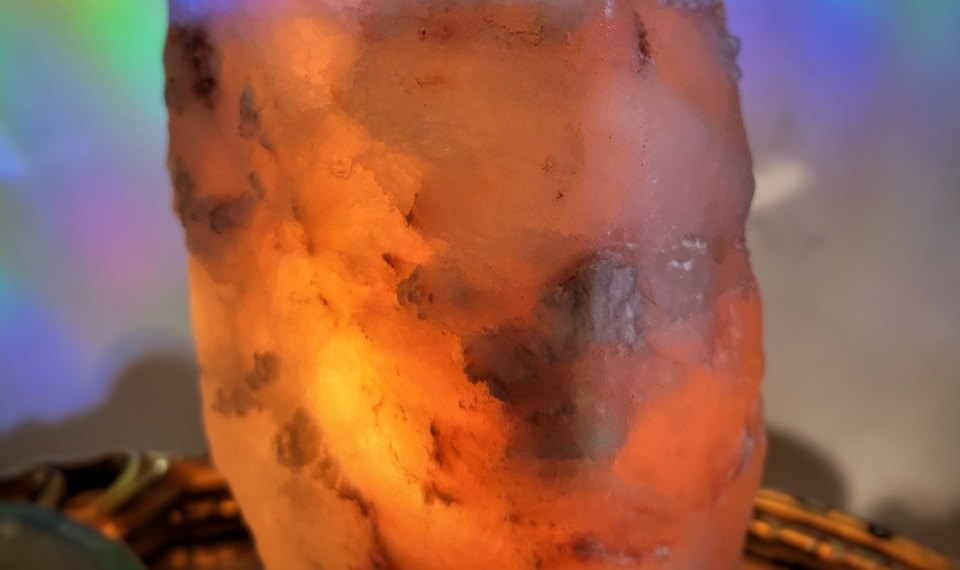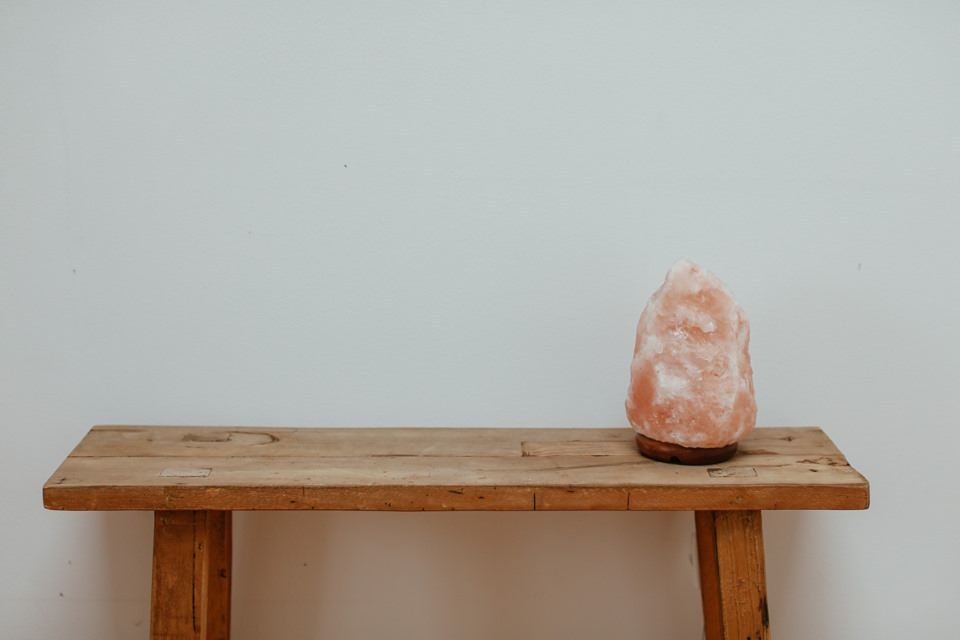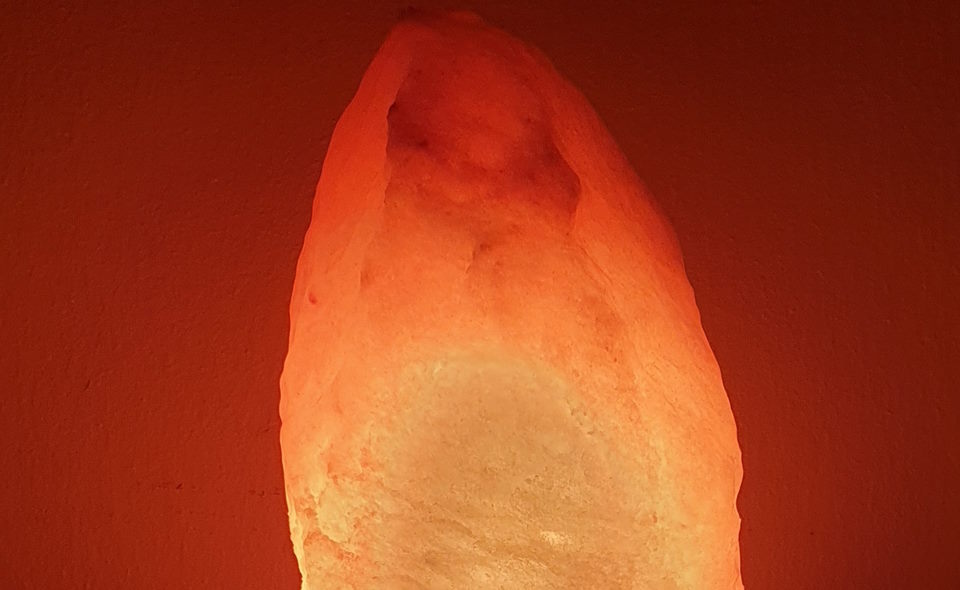Salt lamps have been gaining popularity lately, thanks to their supposed health benefits and unique aesthetic appeal. These lamps are made from chunks of Himalayan salt and emit a soft, warm glow when lit. However, there are some questions that often come up when it comes to using salt lamps, such as whether or not they can melt and emit mold. We will answer some of these frequently asked questions to help you better understand how to care for and use your salt lamp. Whether you’re a first-time user or a seasoned enthusiast, keep reading to learn more!
Introduction

A common question that often arises when discussing salt lamps is, “Do salt lamps melt?” This concern can be attributed to the fact that salt lamps are made of natural Himalayan salt, which is known to rapidly absorb moisture. However, the answer to this question is both yes and no.
Yes, it is possible for salt lamps to melt, but only under specific circumstances. If exposed to excessive moisture or high temperatures, the salt crystals can start to liquefy and drip. This can also happen if the lamp is not used for prolonged periods and the moisture content builds up. If you notice any melting or pooling around your salt lamp, it’s important to unplug it immediately and allow it to cool completely before attempting to move it.
No, salt lamps do not typically melt under normal use. In fact, the heat produced by the light bulb or heating element inside the lamp is not sufficient enough to cause the salt to liquefy. However, it’s important to note that salt lamps are not invulnerable and care should be taken to protect them from excess moisture and heat.
- To prevent your salt lamp from melting, keep it in a dry, cool area away from direct sunlight or any heat sources.
- Don’t leave the lamp on for prolonged periods, and always turn it off when leaving the house or going to bed.
- Regularly clean and dust your salt lamp to prevent any moisture buildup.
By following these simple tips, you can ensure the longevity of your salt lamp and prevent any melting or damage. If you are still concerned about your salt lamp melting, it’s always a good idea to purchase from a reputable seller and to read the care instructions carefully.
Is It Normal for My Salt Lamp to Melt?

If you are an avid fan of salt lamps, you might have experienced seeing your salt lamp melt. Salt lamps are made of natural Himalayan salt crystals. These crystals are sensitive to moisture and heat, making them prone to melting.
However, melting salt lamps may not be normal, especially if you just recently bought it. If your salt lamp is melting, it might be due to poor quality or faulty wiring. Some sellers mix cheap salt minerals with the high-quality ones, which can cause the lamp to melt quickly.
Now, if you’ve had your salt lamp for a while and it’s starting to show signs of melting, then it might be normal. Salt lamps release negative ions that help purify the air around them. However, these ions can also attract moisture, which can cause the salt to melt gradually.
If you don’t want your salt lamp to melt, here are some tips:
- Keep it away from areas where it can be exposed to moisture.
- Place it in a cool and dry area of your home.
- Use a low-wattage bulb to prevent it from overheating.
- Don’t leave it turned on for long periods.
If you’re hesitant about buying a salt lamp because of the melting issue, don’t worry. With proper care and maintenance, your salt lamp can last for years without melting. So go ahead, invest in a high-quality Himalayan salt lamp and reap its amazing benefits.
How Do I Keep My Salt Lamp From Melting?

Salt lamps are perfect for creating a cozy atmosphere and provide amazing health benefits. These lamps made from Himalayan salt are popular for their unique look and the warm glow they emit. However, one issue that some owners of salt lamps face is the melting of their lamp.
When we talk about a salt lamp melting, we don’t mean that it disappears completely. Rather, it becomes smaller and its shape changes due to the moisture in the air. If you’re wondering how to prevent your salt lamp from melting, follow these tips:
-
- Keep it dry
One of the reasons why salt lamps melt is due to the moisture in the air. To prevent this from happening, make sure to keep your salt lamp in a dry environment. You can also place a saucer under your lamp to collect any excess moisture.
-
- Use a low-wattage bulb
The heat from the bulb is the reason why the salt lamp melts. You can reduce the heat by using a lower wattage bulb. A 15-watt bulb is enough to light up your salt lamp and still keep it from melting.
-
- Turn off the lamp when not in use
Your salt lamp needs some rest too. Turning off the lamp when not in use can help prevent it from melting. You can also use a timer to set a specific time for your salt lamp to turn on and off.
By following these tips, you can enjoy the many benefits of your salt lamp and prevent it from melting. Get creative and try different ways to keep your salt lamp dry while still basking in its warm glow.
Do Salt Lamps Create Mold?

For those who are unaware, salt lamps are carved from salt crystals, often by hand, and are known to offer numerous health benefits. They are known to release negative ions into the air, which can improve air quality and even offer therapeutic benefits. However, while they are known to be a great addition to homes, some wonder whether salt lamps can create mold.
To answer this question: No, salt lamps do not create mold. In fact, they are known to absorb moisture and even help to reduce the amount of mold in the air. Salt is a natural dehumidifier, and when heated by the light bulb inside the lamp, it works even more effectively to reduce moisture in the air and prevent mold from forming.
- If you are concerned about mold growth in your home, consider pairing your salt lamp with a dehumidifier to further reduce moisture levels.
- It’s also important to keep your salt lamp in a dry area and away from humidifiers or air conditioning units that could contribute to moisture in the air.
- Additionally, be sure to clean your salt lamp on a regular basis to prevent dust and other allergens from accumulating on the surface, which could contribute to mold growth.
Do Salt Lamps Really Clean the Air?

Salt lamps have become a popular home decor item in recent years due to their unique aesthetics and claimed health benefits. They are said to do more than just add a warm glow to a room and are believed to have air-cleaning properties. But the question is, do salt lamps really clean the air?
First, let’s talk about how salt lamps supposedly work. The idea is that the warm, atmospheric glow emitted by the lamp attracts moisture from the air, which is then absorbed by the salt. This process is called hygroscopy and is believed to trap pollutants and allergens present in the air, effectively cleaning it. Some of the pollutants that salt lamps claim to eliminate include dust, pet dander, and pollen.
But is there any scientific evidence that supports these claims? Unfortunately, the answer is no. While some preliminary studies have suggested that salt lamps may have some air-cleaning properties, there is not enough scientific evidence to definitively say that they can clean the air in a meaningful way.
- One study conducted in 2014 found that certain types of salt lamps could produce small amounts of negative ions, which are believed to have air-cleaning properties. However, the study was conducted in a sealed chamber with very high concentrations of salt, making it difficult to apply the findings to real-world settings.
- Another study published in 2016 found that one type of salt lamp could indeed remove airborne bacteria from a sealed chamber, but again, the study was not conducted in a real-world setting and more research is needed to confirm these findings.
Overall, while salt lamps may provide some aesthetic and mood-boosting benefits, there is no strong scientific evidence to support the claim that they can clean the air in a meaningful way. If you are concerned about air quality in your home, it is best to rely on more established methods of air-cleaning such as high-quality air filters, cleaning regularly, and proper ventilation. Ultimately, salt lamps may be a nice addition to your home decor, but they should not be relied on as a sole means of improving air quality.

